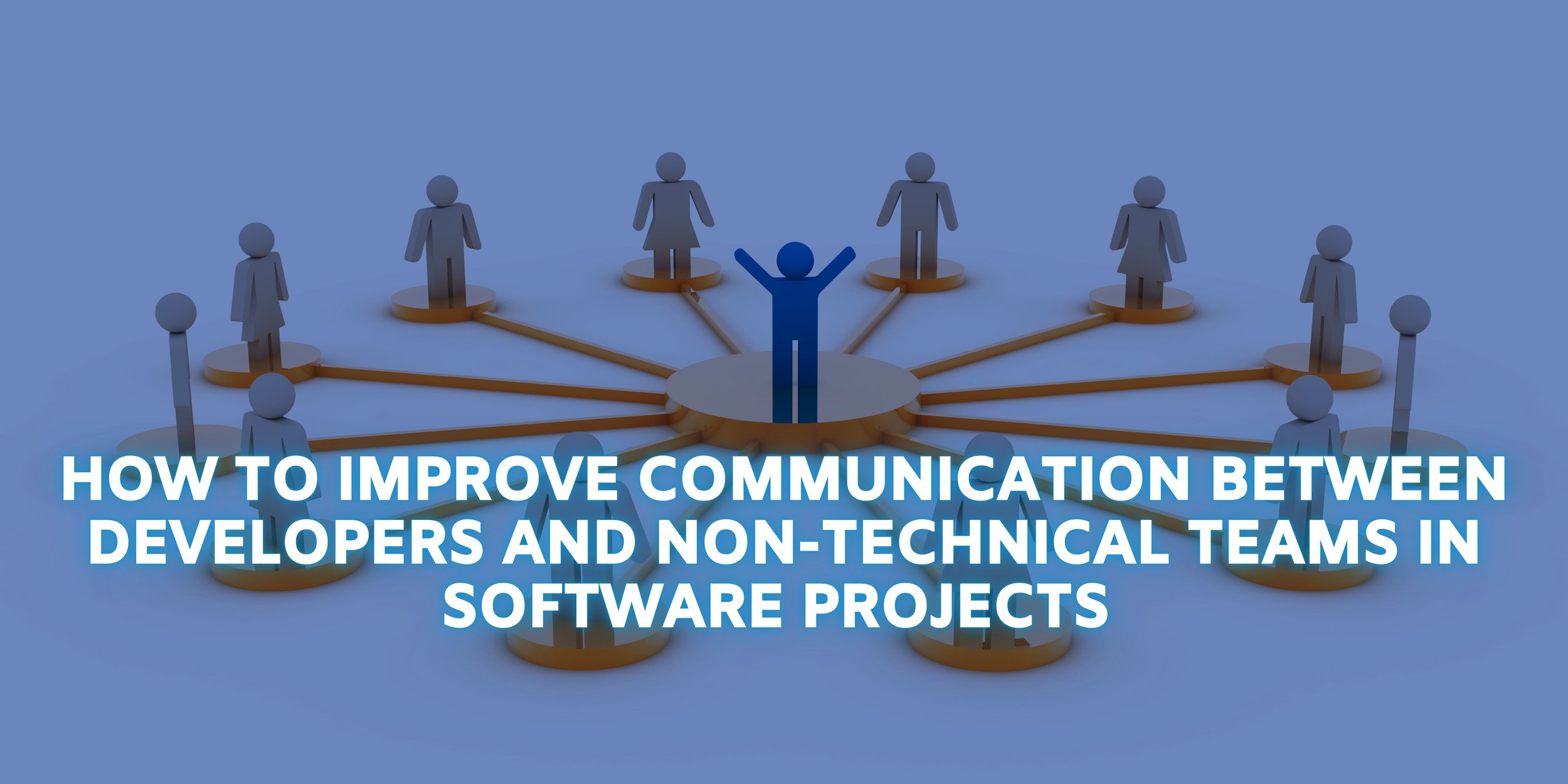Introduction: The Importance of Choosing the Right Software Development Partner
Selecting a software development partner is a decision that requires thoughtful consideration. Software has become a critical component of how businesses operate, solve problems, and serve their customers. The right development partner can transform an idea into a functional solution that aligns with your business’s goals, supports operations, and fosters growth. However, choosing an ill-suited partner can lead to challenges such as delays, budget overruns, and solutions that fall short of expectations.
This guide provides ten essential questions to help you evaluate potential software development companies. These questions address key aspects such as technical expertise, project management practices, communication processes, and long-term collaboration. By focusing on these areas, you can identify a partner capable of delivering high-quality results while supporting a productive and collaborative working relationship.
The purpose of this guide is to equip you with the tools needed to make an informed decision. Asking the right questions will help ensure your project’s success and establish a foundation for a lasting partnership that adds value to your business.
Section 1: Technical Expertise
1. What is your experience with technologies relevant to my project?
Technical expertise is a crucial factor in the success of any software development project. Each project comes with its own set of technical requirements, and selecting a partner with the appropriate skills and experience is essential to achieving the desired outcomes. A development company must demonstrate a solid track record with the tools, frameworks, and platforms that align with your specific project needs. This ensures that they have the knowledge and capability to address the challenges and complexities inherent in the development process.
For instance, if your project involves building a scalable web application, the company should have proven expertise in using technologies such as React, Angular, or Vue.js for the front-end, and Node.js, Django, or similar frameworks for the back-end. These tools are fundamental in creating robust and efficient web applications. Additionally, a development team experienced in database management systems like MongoDB or PostgreSQL can ensure the application handles data effectively and scales as your business grows.
If your project requires integration with cloud services, it is important to work with a team that has hands-on experience with platforms like AWS, Azure, or Google Cloud. These services are vital for creating flexible and scalable infrastructure, and familiarity with their tools and features enables the development team to optimize performance, security, and cost-efficiency. Similarly, projects that involve mobile app development may demand expertise in platforms such as Flutter, React Native, or Swift to ensure the application delivers a seamless user experience across devices.
By discussing their technical expertise, you can assess whether the development company has the skills necessary to deliver a solution that is both functional and future-proof. Asking specific questions about their experience with the technologies your project requires allows you to determine whether their knowledge is theoretical or backed by practical, real-world application. This evaluation helps ensure that your chosen partner is fully equipped to deliver a solution that meets your needs and supports your long-term goals.
2. Can you provide examples of past projects and client references?
Examining a company’s past work is one of the most effective ways to evaluate its capabilities and suitability for your project. Case studies, testimonials, and references provide valuable insights into how the company has approached and executed projects similar to yours. These resources offer a detailed view of their problem-solving skills, ability to meet deadlines, and capacity to deliver high-quality results. For example, a well-documented case study can highlight how the company addressed specific challenges, implemented solutions, and achieved measurable outcomes. This information helps you assess whether their approach aligns with your project’s requirements and goals.
Platforms like Clutch or Google Reviews can further enhance your understanding of a company’s reputation. These platforms host reviews from a wide range of clients, offering an unbiased perspective on the company’s reliability, communication practices, and overall performance. Reading through these reviews can provide a clearer picture of what you can expect from a potential partnership. Additionally, client testimonials, often featured on the company’s website, can highlight positive experiences and areas where the company excels. While testimonials are typically curated, they can still offer useful insights when paired with independent reviews.
Requesting client references allows you to go a step further by engaging directly with past clients. This provides an opportunity to ask specific questions about their experience, such as how effectively the company managed the project timeline, how responsive they were to feedback, and how they resolved challenges that arose during development. For example, you might ask, “Can you share how the team addressed unexpected technical hurdles during the project and how they ensured the final product met your expectations?” These conversations can offer a deeper level of understanding and help you make an informed decision about whether the company is the right fit for your needs.
Section 2: Project Management and Process
3. How do you approach project management and timelines?
A structured approach to project management is essential for ensuring that a software development project progresses smoothly and achieves its objectives. Effective project management involves clearly defined processes, realistic timelines, and a focus on maintaining alignment between all stakeholders. Development companies often adopt methodologies such as Agile or Scrum, which divide the project into manageable phases or sprints. These iterative approaches allow for regular feedback and adjustments, ensuring that the final product evolves in response to changing requirements or unforeseen challenges. By understanding how a company approaches project management, you can gain valuable insight into their ability to stay organized, track progress, and adapt to your needs.
An important aspect of project management is how the company defines milestones and measures success at each stage of development. Clear milestones provide structure and enable both the development team and the client to evaluate progress effectively. Additionally, understanding how the company handles communication during the project is critical. Regular updates and check-ins ensure that you remain informed and can provide timely feedback. This collaborative approach minimizes the risk of misalignment and helps identify potential issues early, reducing the likelihood of delays or costly revisions.
It is also important to assess how a company manages challenges that arise during the development process. Unexpected issues, such as technical hurdles or evolving client requirements, are common in software projects. A reliable partner will have a clear strategy for addressing these challenges without compromising the project timeline or quality. Asking questions such as, “What steps do you take when delays occur, and how do you mitigate their impact?” can provide insight into the company’s problem-solving skills and ability to remain flexible. By evaluating their project management practices, you can ensure the development process is well-organized, adaptable, and aligned with your expectations.
4. What is your quality assurance process?
Quality assurance (QA) is a critical component of the software development process, ensuring that the final product meets performance, security, and usability standards. A robust QA process involves systematic testing at various stages of development to identify and resolve potential issues before the software is delivered. This process encompasses multiple aspects, including functionality, compatibility, user experience, and performance under different conditions. A thorough QA approach minimizes the risk of errors and ensures that the software aligns with your business objectives and technical requirements.
Many development companies employ a combination of automated and manual testing to achieve comprehensive quality assurance. Automated testing uses specialized tools to quickly and accurately identify technical issues, such as coding errors or performance bottlenecks, across large portions of the software. Manual testing, on the other hand, focuses on user-centric aspects, such as the intuitiveness of the interface and the overall user experience. This combination allows for a holistic approach to QA, addressing both technical precision and human usability.
It is important to understand the specific QA practices your development partner employs and how they ensure the software adheres to your standards. You might ask, “What is your process for testing functionality, compatibility, and security, and how do you handle issues identified during testing?” Additionally, inquire about their approach to continuous monitoring and quality checks during the development lifecycle. By evaluating the company’s QA practices, you can gain confidence that the software will not only perform reliably but also deliver a seamless and satisfying experience to its users.
Section 3: Communication and Collaboration
5. What is your communication process and frequency?
Effective communication is a cornerstone of any successful software development project. Clear and consistent communication ensures that both parties remain aligned on project goals, timelines, and deliverables. It also fosters a collaborative relationship where feedback can be exchanged openly, and potential issues are addressed proactively. Understanding a company’s communication process provides insight into how they manage updates, handle feedback, and ensure transparency throughout the development lifecycle.
A reliable development partner will typically use a combination of tools and methods to facilitate communication. These might include regular status meetings, detailed progress reports, and project management platforms such as Jira, Trello, or Asana. These tools help track tasks, milestones, and changes, ensuring everyone involved has access to up-to-date information. The frequency of communication is equally important. Weekly updates or bi-weekly sprint reviews, for example, allow for consistent monitoring of progress and provide opportunities to refine the project direction if needed. Asking questions such as, “How often will updates be shared, and what tools will be used to manage communication?” can help you determine if their approach aligns with your expectations.
It is also important to evaluate how the company resolves challenges or addresses changes in scope. Open and responsive communication is essential for navigating unforeseen issues without derailing the project. A strong partner will encourage collaboration and actively involve you in decision-making processes to ensure the final product aligns with your vision. By assessing their communication practices, you can determine whether the development team is equipped to maintain a smooth and productive partnership throughout the project.
6. Who will be working on my project?
Understanding who will be working on your project is essential to evaluate the expertise and capacity of the development team. The skills, experience, and structure of the team directly impact the quality of the final product and the overall efficiency of the development process. Knowing the roles of key team members, such as developers, designers, quality assurance specialists, and project managers, helps you assess whether the company has the necessary talent to deliver a solution that meets your needs. Each role contributes uniquely to the project, and understanding these contributions ensures that the team is equipped to handle the technical and operational demands of your project.
It is equally important to evaluate the team’s experience with projects similar to yours. Developers who have worked on comparable projects are likely to have a deeper understanding of the specific challenges and opportunities your project may present. This experience can translate into faster problem-solving, better decision-making, and more innovative solutions. Asking questions such as, “Can you provide examples of projects your team members have completed in this industry or with similar technologies?” can provide clarity on their expertise and relevance to your needs.
Team consistency is another critical factor to consider. Changes in personnel during the development process can lead to disruptions, delays, or a loss of continuity in project execution. Understanding how the company manages team stability, including how they handle knowledge transfer if changes are unavoidable, can provide reassurance that your project will remain on track. By gaining insight into the team’s structure, qualifications, and management practices, you can ensure that your project is handled by a capable and reliable group of professionals.
Section 4: Pricing and Budget Management
7. What is your pricing model and how do you handle budget changes?
Understanding a software development company’s pricing model is essential for effectively managing your project’s budget and avoiding unexpected costs. Different pricing models cater to various project types and requirements. A fixed-price model is ideal for projects with a clearly defined scope and deliverables, as it provides an upfront cost estimate, allowing you to plan with certainty. However, this model can be less adaptable if changes are needed during the development process. On the other hand, a time-and-materials model offers flexibility, making it suitable for projects where requirements may evolve over time. This model charges based on the actual time spent and resources used, enabling adjustments to the project scope as necessary.
It is also important to understand how the company handles budget changes resulting from scope adjustments or unforeseen challenges. A reliable development partner should have a transparent process for communicating the financial implications of these changes. This includes providing detailed explanations of how additional costs will affect the timeline and overall budget. Asking questions such as, “How do you handle scope changes during the project, and what steps do you take to keep clients informed of cost implications?” can provide insight into their approach to financial management and transparency.
Additionally, regular financial updates and clear reporting are crucial for maintaining control over your project’s budget. The company should provide detailed breakdowns of expenses and notify you promptly if the project is at risk of exceeding the initial budget. This allows you to make informed decisions about prioritizing features or reallocating resources. By understanding the pricing model and how the company manages budget changes, you can establish a financial plan that aligns with your project goals and ensures a smooth development process.
Section 5: Data Security and Protection
8. How do you ensure the security of our data and software?
Security is a foundational element of any software development project, particularly when sensitive data is involved. A reliable development partner must prioritize robust security measures to protect your data and ensure the integrity of the software being developed. Secure coding practices, for example, help prevent vulnerabilities at the code level, reducing the risk of exploitation. Encryption protocols add an additional layer of protection by safeguarding data during storage and transmission, ensuring that unauthorized parties cannot access critical information. These practices are essential for building trust with end users and complying with regulatory requirements.
Compliance with relevant regulations, such as GDPR, HIPAA, or PCI-DSS, is another critical consideration. These frameworks outline specific standards for handling sensitive data, and adherence to them demonstrates the company’s commitment to legal and ethical responsibilities. A development partner experienced in navigating these regulations can help ensure your software meets industry-specific compliance requirements, reducing the risk of penalties and reputational damage.
Regular security audits and testing are also integral to maintaining the safety and reliability of your software. Vulnerability assessments and penetration testing help identify and address potential risks before they can be exploited. You might ask, “What specific security protocols and testing methods do you use to protect client data and ensure software integrity?” This question can provide clarity on the company’s approach to safeguarding your project. By partnering with a development team that places a high priority on data security, you can protect your organization’s assets and create software that meets the highest security standards.
Section 6: Post-Launch Support and Long-Term Partnership
9. What post-launch support do you offer?
The deployment of software marks the beginning of its operational lifecycle, making post-launch support a critical aspect of the development process. Effective post-launch support ensures the software remains functional, secure, and adaptable to evolving business needs. This includes addressing bugs that may emerge after deployment, implementing regular updates to enhance performance, and incorporating new features to meet changing user expectations. A reliable development partner will have a clear plan for providing ongoing support and maintaining the software’s quality over time.
Comprehensive post-launch support typically involves several key components. These include monitoring the software to identify and resolve issues promptly, offering technical assistance to address user concerns, and ensuring compatibility with new technologies or platforms as they arise. Regular maintenance not only sustains the software’s functionality but also helps optimize its performance, extending its value to your business. Asking questions such as, “What is your process for handling critical issues after launch, and how do you prioritize and implement updates?” can provide insight into the company’s commitment to long-term support.
Additionally, post-launch support should account for the potential growth and scalability of the software. A development partner with a proactive approach will work closely with you to ensure the software evolves alongside your business. This may involve periodic evaluations to identify opportunities for improvement, such as enhancing security measures or optimizing user experience. By selecting a partner that offers robust and responsive post-launch support, you can ensure that your software continues to meet your needs and provides lasting value.
10. How do you ensure continuous improvement and innovation?
Continuous improvement and innovation are essential to ensuring your software remains relevant and competitive over time. A strong development partner will not only deliver a solution that meets your immediate needs but also take a proactive approach to future-proofing your software. This involves regularly assessing the software’s performance, identifying areas for enhancement, and incorporating emerging technologies to optimize functionality and user experience. By focusing on continuous improvement, the development partner ensures that the software adapts to changing business requirements and technological advancements.
A forward-thinking partner will stay informed about industry trends and new technologies that could add value to your solution. For example, advancements in artificial intelligence, machine learning, or cloud computing might present opportunities to enhance efficiency, scalability, or user engagement. The ability to integrate these technologies into existing systems requires technical expertise and a deep understanding of your business objectives. Asking questions such as, “How do you stay updated on emerging technologies, and what is your process for recommending and implementing new features?” can provide insight into the company’s commitment to innovation.
In addition to technical enhancements, continuous improvement also involves refining processes and addressing user feedback to deliver a better product over time. This iterative approach ensures the software evolves to meet user needs while maintaining high performance and security standards. By partnering with a development team that prioritizes innovation and long-term growth, you can ensure your software remains a valuable asset that supports your business’s success in an ever-changing environment.
Conclusion: Making an Informed Decision
Selecting the right software development partner requires careful evaluation and thoughtful questions. By assessing a company’s technical expertise, project management practices, communication strategies, and commitment to long-term collaboration, you can make an informed decision. These ten questions provide a framework for understanding whether a potential partner aligns with your goals, values, and specific requirements. Choosing the right partner not only ensures a successful project but also establishes a foundation for a collaborative relationship that drives growth and innovation. Use this guide to help you navigate the selection process and set your business up for success.
What questions would you ask when selecting a software development partner? Let us know in the comments below!
If you're interested in learning more about how to select a software development partner for your next project or how AI and custom software solutions can benefit your business, feel free to contact us.
Written by Natalia Duran
—
ISU Corp is an award-winning software development company, with over 19 years of experience in multiple industries, providing cost-effective custom software development, technology management, and IT outsourcing.
Our unique owners’ mindset reduces development costs and fast-tracks timelines. We help craft the specifications of your project based on your company's needs, to produce the best ROI. Find out why startups, all the way to Fortune 500 companies like General Electric, Heinz, and many others have trusted us with their projects. Contact us here.


















